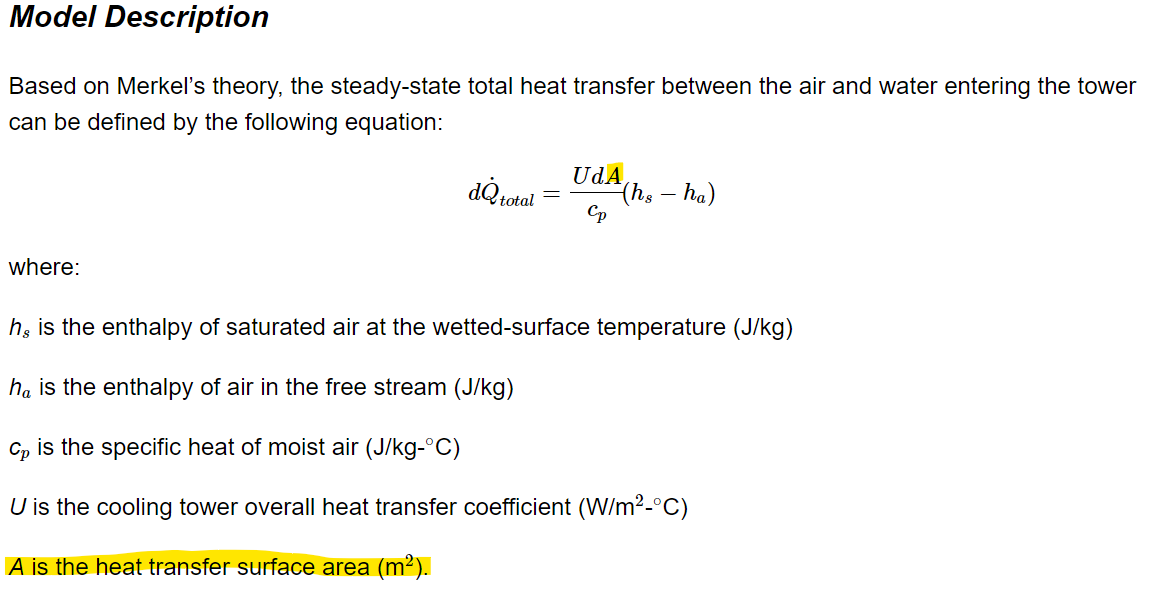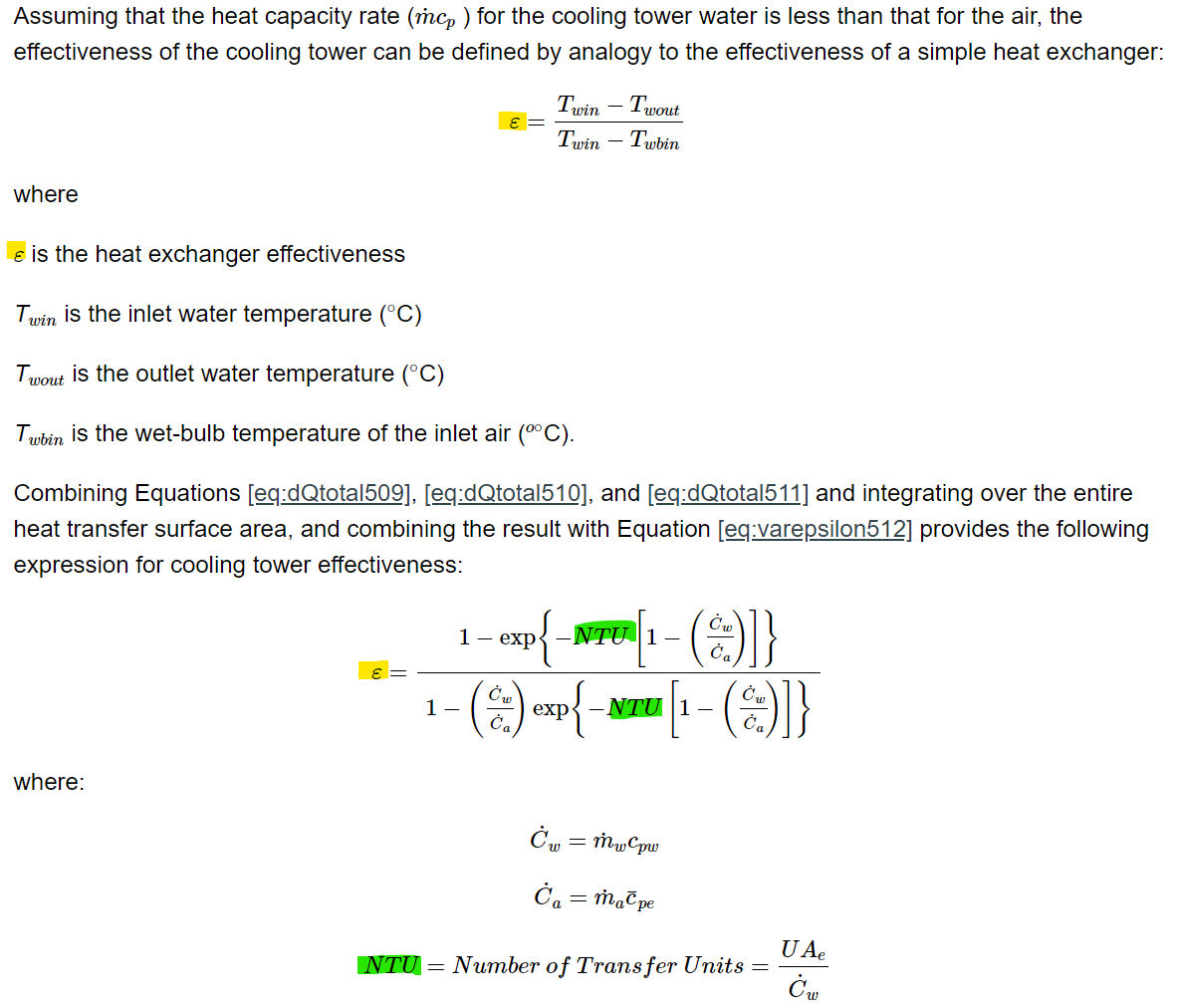What is U-Factor Times Area Value in Cooling Towers
A basic question. What is U-Factor Times Area Value in CoolingTower:* objects?
- What area is the area? The total surface area of the cooling tower packing? The apparent area of the packing? The total air inlet opening area? Or the total air outlet opening area?
- The unit is [W/K]. The K seems to be a temperature difference, but where is it? The difference between the OA WB and the inlet water temperature? Between the OA WB and the outlet water temperature? Or between the water inlet temperature and outlet temperature?







